Hip-hop is 50 years old. An old soul that defined many lives. But the beauty of hip-hop is that it’s also just beginning. While much of the conversation this anniversary year has focused on the genre’s foundational moments, we often shortchange more recent parts of its history.
The last decade of hip-hop has been highly criticized, as youth movements often are. The kids have been called out for “mumble rap,” charts skewed by streaming, and a perception by some OGs that the new generation of stars lacks the same artistry as the people who came before. But dismissing the great music of the past decade is a disservice to a fifth of hip-hop’s history and some truly transcendent work.
The past 10 years have given us classic albums, game-changing moments, a Pulitzer Prize winner, diamond-level singles sales and new household names. It’s given us Jay-Z’s most introspective album, female MCs such as Cardi B and Megan Thee Stallion crashing through the glass ceiling, Drake’s chart-topping dominance, the record-breaking feats of Lil Nas X and young visionaries like Rae Sremmurd and Lil Baby.
To celebrate these late-generation greats, we’ve put together the new rap canon: the 25 albums from the past 10 years you can’t leave out when talking about the history of hip-hop. The albums are influential, culture-shifting works that will continue to influence for years. So, ignore the haters. Because rap is in good hands.
2013
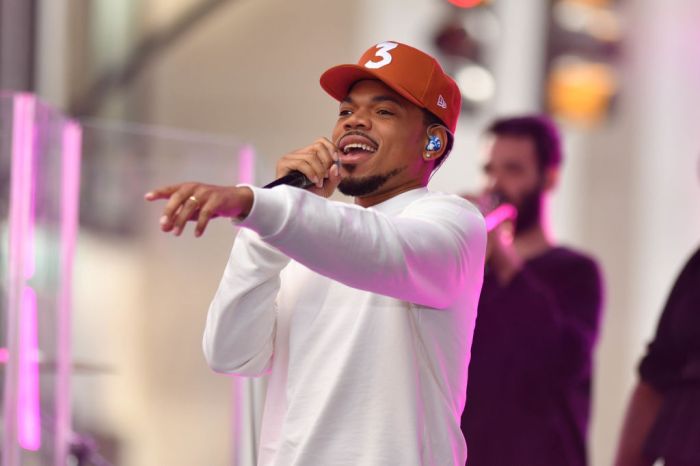
NDZ/Star Max/GC Images
Acid Rap, the second mixtape from Chance The Rapper, is the last gem of the era of the audio platform DatPiff. He meets the world fresh off the edge of his debut mixtape 10 Day and with a few tours under his belt. The poet from the West Chatham neighborhood in Chicago with everything to prove knits together a bold tapestry of his life on Acid Rap. This time, he plays in the last breeze of his high school adolescence with a blistering Chicago summer in the background and the high-energy jazz scatting of a thrill jockey in his inflections, making the 14-track mixtape stand the test of nostalgia.
The album is a hallmark in the lives of the first internet generation, who can state without hesitation where they were when they heard the mixtape for the first time, who they were with and who they fell in love with while listening to “Cocoa Butter Kisses” with the breeze of the last days of their youth in front of them. — Clarissa Brooks
2014
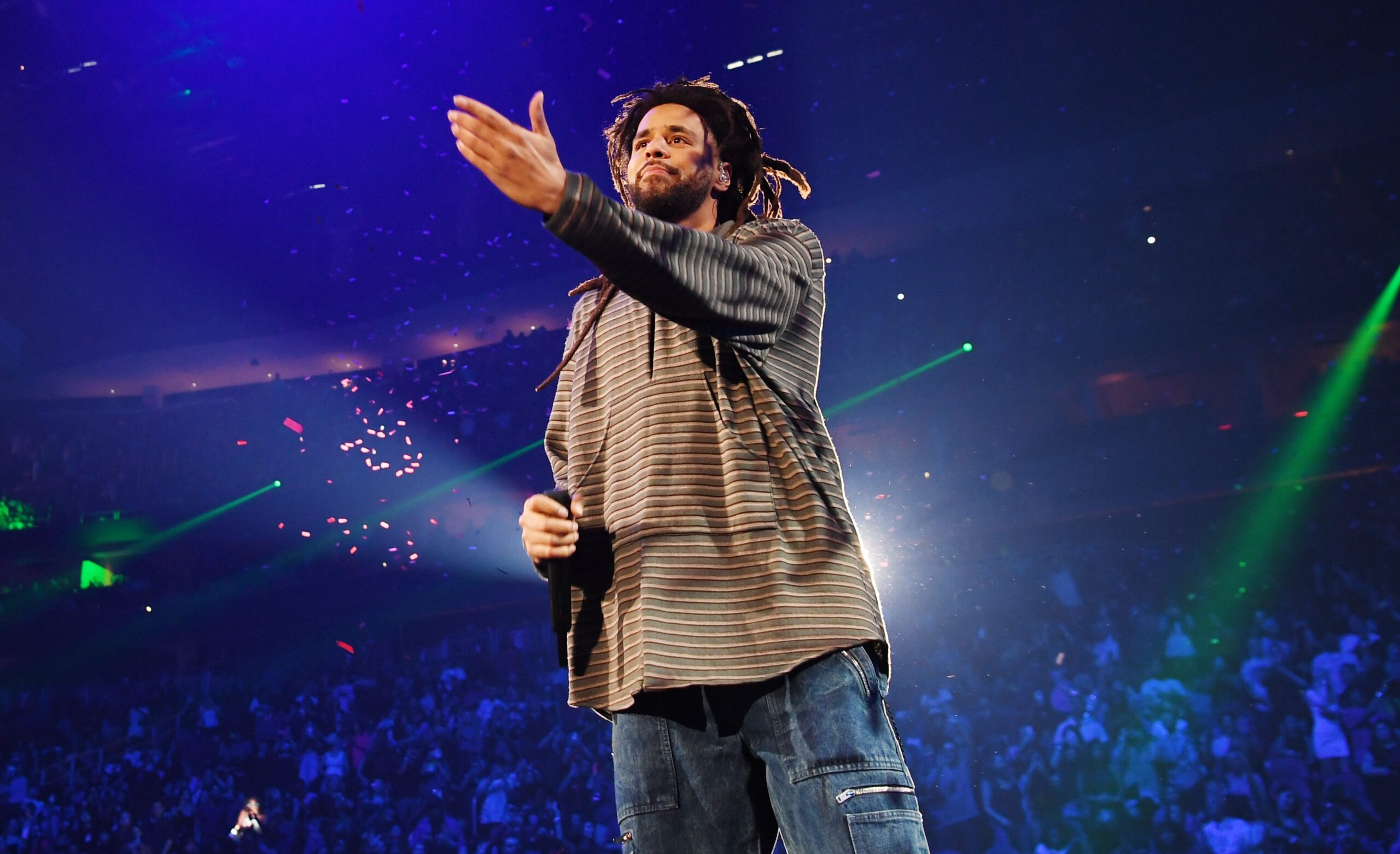
Denise Truscello/Getty Images for iHeartRadio
J. Cole — 2014 Forest Hills Drive
Jermaine Cole brought the world to Cumberland County, North Carolina, in 2014 with his third studio album, 2014 Forest Hills Drive. The prince of Fayetteville returns home after chasing dreams in New York City, with the victories and scars to show for it. Opening with the trio of “Intro,” “January 28th,” and “Wet Dreamz,” we meet J. Cole ready to proclaim himself judge, jury and executioner of his autobiography. Those three songs alone segmented J. Cole as a legend of his craft not by his self-proclamation but through his sharpened production. The true heat of the album arrives on “Fire Squad,” “G.O.M.D,” and “No Role Modelz,” where the chaos-hungry J. Cole parades around his hometown asking for all the chaos he can get his hands on. 2014 Forest Hills Drive reflects the times in the most honest sense, created by a young and humble laborer of rap willing to share the mythology of his teenage years in a city that made him. — Clarissa Brooks
It’s beautiful when an artist finds a way to put it all together. When Nicki Minaj dropped her third studio album, she was fully comfortable with her total package. The flow was crisp. The visuals were confident. The song structure was hit-making mastery. “Anaconda” was undeniable. The same goes for another bonus track “Truffle Butter” and the intoxicating “Only.” Minaj had already reached superstar status when The Pinkprint came out. But this album enhanced her catalog with what may be her most complete work and a reminder that all these rappers are her sons. — David Dennis
Top Dawg Entertainment was the West Coast record label that birthed stars such as Kendrick Lamar. Isaiah Rashad would be the label’s first foray into the South. He delivered a defining debut album about Southern pride, his complicated relationship with his father, insecurities and addiction. The album is an ode to Southernness with songs such as “Brad Jordan” and “Webbie Flow (U LIKE),” but it’s “R.I.P. Kevin Miller” (a reference to Master P’s deceased younger brother) that is his opus. “If I die today, b—- my legacy is straight / I’m the best they never heard” is the album’s thesis. This is an artist secure in his greatness and understanding that it might not translate to mainstream success. It doesn’t matter: He’s still going to shine. Cilvia brought Top Dawg Entertainment to the South. It brought Rashad to the collective consciousness. And it charted a new path for what a Southern classic could look like. — David Dennis
2015
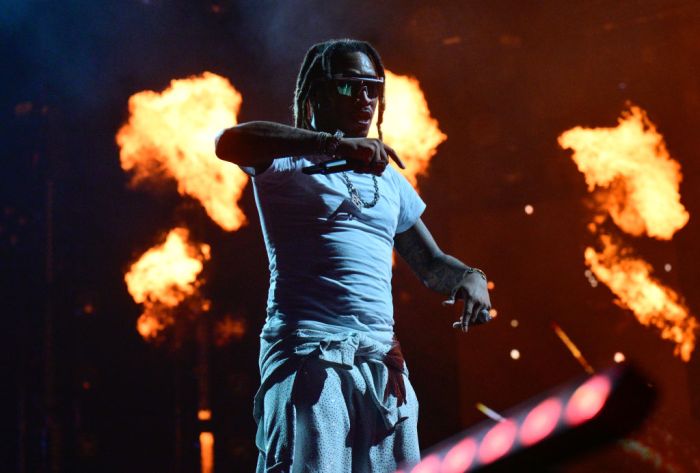
Prince Williams/Wireimage
Understanding just why Future’s Dirty Sprite 2 commands the adulation it does is to understand the groundwork laid before it. From the fall of 2014 to roughly the spring of the next year, Future’s output was Gucci Mane-like. Monster, Beast Mode and 56 Nights were street scriptures. By the summer of 2015, all Dirty Sprite 2 did was live up to the incredible buzz its predecessors had paved. It didn’t.
With Dirty Sprite 2, Future laughed in the face of hype, spit lean in its face and proceeded to lap it twice without breaking a sweat.
Dirty Sprite 2 is Future’s toxic magnum opus. Drenched in a dystopian worldview, whatever commercial sensibilities he had following his second album, Honest, he abandoned them here. Yet the darker his music became, the more Future’s star power began to shine. He starts the album boasting, “I just f— your b— in some Gucci flip-flops.” His topic range doesn’t experiment much past sex, drugs, money, and being the guy who claimed “B— I’m getting the same money as Cam Newton … Ask me how it feel to be a millionaire.” Future didn’t exactly reinvent the wheel here. He just tricked out the ride into an intergalactic spaceship of top-tier debauchery.
Only one featured artist is on the album — a Drake appearance on “Where Ya At?” That’s intentional, as the two would drop their joint project, What a Time To Be Alive, a month later. But on Dirty Sprite 2, Future was a man lost, obsessed with his redemption arc. His pain proved to be his fuel. His private life was becoming increasingly public, partly by his own doing — “Best thing I ever did was fall out of love,” he lamented on “Kno The Meaning.” Rarely over the last decade have we seen a rapper thrive in his darkness like this. Not everyone in rap can play the villain role and still be endearing.
It’d be unfair to label the album “soulless.” There’s a ton of soul throughout the album — just not in the way we’ve been conditioned to view “soul music.” On Dirty Sprite 2 lives the battered, bruised and nearly unrecognizable soul of a man who finds peace in capitalistic conquest, sex as a weapon and codeine-laced escapades that help shift one warped reality to another.
Ask most people about Future’s future following his breakout feature on YC’s 2011 hit “Racks on Racks.” Chances are it wouldn’t have warranted inclusion on a list like this. In 2023, with a prolific catalog separating him from many of his peers, Future ranks as one of the most influential rappers.
Dirty Sprite 2 might not be a perfect rap album. But it is, without question, the perfect Future album. — Justin Tinsley
It was easy to dismiss Rae Sremmurd when they popped up with the loud, minimalist “No Flex Zone.” Sure, they were two Bow Wow-sized kids from Mississippi who had made one hit, but where was the longevity? Sremmlife established Swae Lee and Slim Jxmmi as bona fide hitmakers. Especially Swae Lee. Every hook on this album is infectious. Every melody gets in your bones and refuses to leave. Try to listen to “No Type” and “Come Get Her” without singing the hooks the rest of the day. This is how you prepare the world for streaming chart domination. — David Dennis
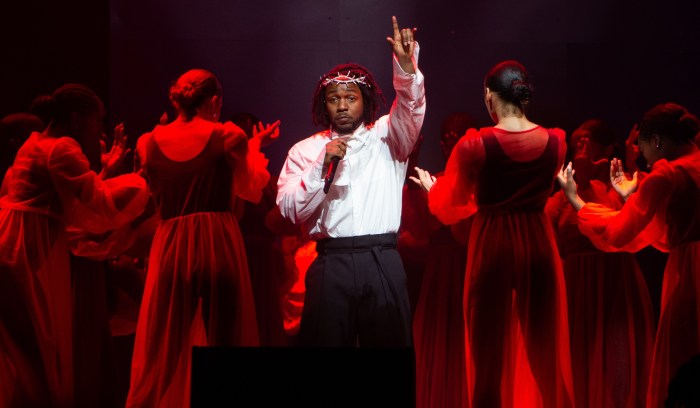
Joseph Okpako/WireImage
Kendrick Lamar — To Pimp a Butterfly
What other words are there for To Pimp a Butterfly? It’s one thing when an artist creates an album that defines an era; Kendrick Lamar did it twice. More impressively, he did it back to back. Miami Heat president Pat Riley would be proud. To Pimp a Butterfly became music for a movement in 2015 as it wrestled with Black power, police brutality, mental health, community relations, and Black identity, just as those topics became more relevant to the whole country. Lamar tapped into the inner turmoil from his newfound stardom, along with a healthy dose of survivor’s guilt. For better or worse, a lot of us felt the same way. Mos Def once said that hip-hop reflects whatever we are at that moment. No album captures a sense of time, place, and truly reflects the audience like To Pimp a Butterfly. — Marcus Shorter
Young Thug played with sound, time and phantoms on his commercial mixtape debut, Barter 6. As Jesse McCarthy stated in Notes on Trap, “[Young Thug] insists on being the soloist and chorus all at once; his is an orchestral impulse, a surround sound lyricizing every inch of space on the track.” The 2015 release was fresh off the heels of the Cleveland Avenue MC’s disavowal of Lil Wayne as his mentor after years of fawning over him.
Barter 6 is full of songwriting genius that overshadows Young Thug’s public persona and mysticism. Whether it be the melody-rich opener “Constantly Hating” featuring Birdman that enters the mind of a man uninterested in the rules of anything. With tracks such as “Halftime” and “Just Might Be,” he tunnels through a world of yodels, hooks and time elasticity that pieces itself together before your eyes. The album’s lead single, “Check,” which for many is their first interaction with Young Thug’s music, has never played well with the norm. It sounds different from anything and anyone. The lyricism and delivery are one of one. And the replay value is undeniable. Such would become the calling cards of its unorthodox composer. — Clarissa Brooks
Drake — If You’re Reading This It’s Too Late
On the eve of Valentine’s Day 2015, Drake surprise dropped If You’re Reading This It’s Too Late — a 17-track stopgap mixtape released while the Canadian rapper recorded his anticipated fourth studio album, Views From The 6 (2016).
Yet, on Too Late, Drake transforms into the antithesis of the singing lover boy who had risen to rap’s peak. The project delivers Drake’s “6 God” alter ego, who preaches on fame, lust and legacy, thoughts all manifested through obvious anxiety. Drake notably samples Ginuwine’s 1999 song “So Anxious” on two tracks. Too Late also includes features by Lil Wayne, Travis Scott, and PartyNextDoor, the catchy “running through the 6 with my woes” hook, and contemplations of death, retirement and love lost. As he did in So Far Gone in 2009, Drake “dropped a mixtape that sounded like an album” with Too Late, which debuted at No. 1 on the Billboard 200. — Aaron Dodson
2016
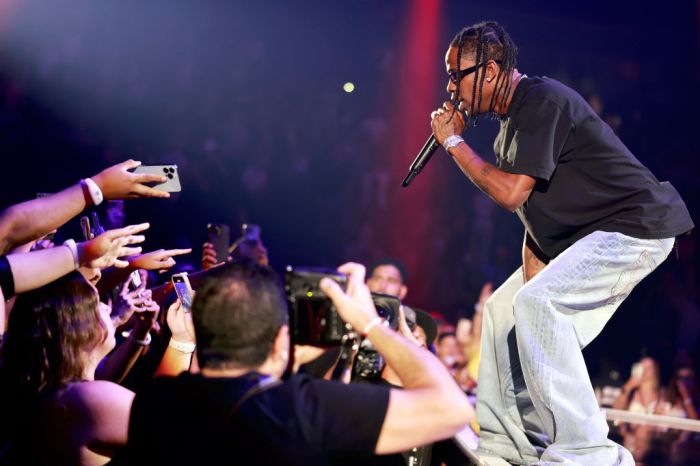
Matt Winkelmeyer/Getty Images for iHeartRadio
Travis Scott — Birds in the Trap Sing McKnight
The beauty of Travis Scott’s second studio album begins with its title, which is deeper than an homage to a revered R&B singer.
“[Birds] is basically about all my friends and growing up in [Houston],” Scott told Billboard. “I’m not saying that it’s the trap — we not in the f—ing projects but it’s a social trap … from what you want to do and how you want to express yourself.”
Birds is a sonically intoxicating, 14-track masterpiece, highlighted by cosigns from creative greats. In the intro, Andre 3000 confesses memories of the Atlanta child murders before Kid Cudi hums on “through the late night,” and Kendrick Lamar kills “goosebumps.” Then, there’s the smash, “pick up the phone,” featuring Young Thug and Quavo, who croons in auto-tune: “Birds in the trap sing Brian McKnight / Percocet and codeine, please don’t take my life.” — Aaron Dodson
Kanye West — The Life of Pablo
Essentially, this is a eulogy to the once-great music made by the artist formerly known as Kanye Omari West.
For the past two years, West has legally gone by “Ye.” And his last three solo studio albums, ye (2018), Jesus Is King (2019) and Donda (2021), all reached No. 1. Yet, these projects are mostly forgettable. His music in the past five years has shown only flashes of the artist who once delivered a 1990s Chicago Bulls-esque run of solo albums — The College Dropout (2004), Late Registration (2005), Graduation (2007), 808s & Heartbreak (2008), My Beautiful Dark Twisted Fantasy (2010) and Yeezus (2013) — before he self-destructed.
So, it’s time we give flowers to the last great album from Kanye West — 2016’s The Life of Pablo.
At its core, The Life of Pablo is a hybrid rap and gospel album. “With a whole lot of cursing, but it’s still a gospel album,” West once called his seventh studio project, which he first announced in November 2013. The album was initially titled So Help Me God, then Swish, before West ultimately landed on The Life of Pablo. He’s never publicly confirmed which Pablo (Picasso, Escobar, Neruda, etc.) the album title refers to.
The magic of The Life of Pablo is that it wasn’t finished when the album finally dropped on Feb. 14, 2016. The final version of West’s stream of consciousness work of art didn’t officially land until June 2016. Recorded worldwide, from Hawaii to Canada to Mexico and Italy, The Life of Pablo credits a loaded collective of creatives, including producers Rick Rubin and Swizz Beatz, and Rihanna, Kendrick Lamar, The Weeknd and Frank Ocean.
The Life of Pablo opens with the angelic “Ultralight Beam,” featuring gospel singer Kirk Franklin and West’s fellow Chicago native, Chance The Rapper, who proclaims on the track, “I met Kanye West, I’m never going to fail.” Then, there’s “Father Stretch My Hands Pt. 1,” the beat of which drops perfectly to producer Metro Boomin’s tag, “If young Metro don’t trust ya, I’m gon’ shoot ya.” There are also unhinged cuts, led by “Famous,” on which West refers to his controversial interruption of Taylor Swift’s Grammy Award acceptance speech in 2009. On the track, West refrains, “I made that b—- famous.” On “Feedback,” he says, “I’ve been out of my mind a long time,” before yelling, “Name one genius that ain’t crazy!” And on “Facts (Charlie Heat Version),” he trashes Nike, a former collaborator he left to design sneakers for its biggest rival, Adidas.
Above all, The Life of Pablo delivers the sentiment West acknowledges midway through the 20-track album: “I miss the ‘Old Kanye,’ ” he recites. Since 2016, West has strayed even further from the “Old Kanye.” And that does not disrespect his artistry or longtime battle with mental health. We’re also not overlooking the “slavery is a choice” tirade, his infatuation with former president Donald Trump, the violent antisemitism, or the strange workplace behavior he reportedly displayed at Adidas — among far more reasons most people have simply canceled Ye.
Whether West’s music ever returns to the enchanting feeling he delivered in the first decade of his rap career is just a hope for now. Until then, one notion must be acknowledged:
We miss The Life of Pablo Kanye. — Aaron Dodson
2017
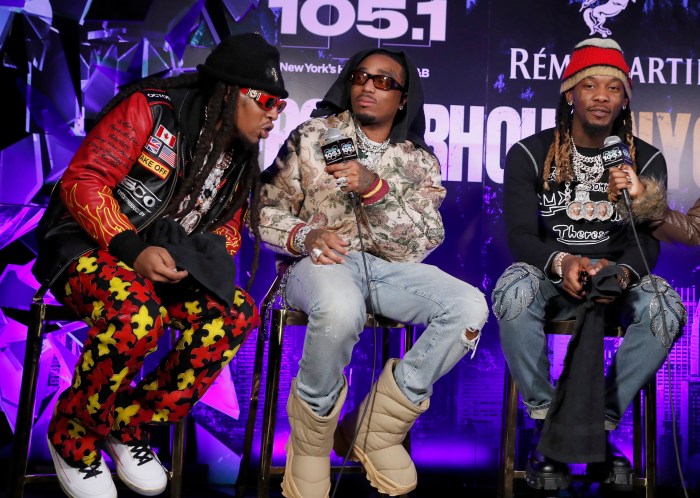
Jesse D. Garrabrant/NBAE via Getty Image
The North Atlanta trio of Offset, Quavo and Takeoff, known as Migos, pumped out 12 mixtapes and a half-dozen hit singles, including their breakout hit “Versace,” which famously caught Drake’s attention. They endured public beef, jail time, and a reported robbery outside of a studio in 2013. And while Yung Rich Nation (2015), their first studio album, was respected, it undersold.
Then came Oct. 28, 2016 — the day Migos dropped “Bad and Boujee.”
One of the past decade’s best rap songs, “Bad and Boujee,” gave Migos momentum for their sophomore album, Culture, in 2017. At 13 tracks and no skips, Culture is the seminal work of Migos, which was disbanded in 2022 before Takeoff was slain in November 2022 at the age of 28. — Aaron Dodson
Before The Black Album dropped in 2003, Jay-Z called it the “bookend to the whole career.” Fourteen years later, he released the album that now lays claim to that designation. 4:44 builds on Jay-Z’s increasing openness with his audience and puts Shawn Corey Carter on a therapist’s couch. He lays bare his insecurities and shortcomings as a husband, father, and man. Sure, he dropped jewels on investing and buying property that the die-hards still swear by today, but that’s an appetizer for the main course.
Jay-Z killed his alter ego on the first song and spent the remaining time self-interrogating until finally rebuilding himself into someone better. The kid who bragged about being a player on 1996’s Reasonable Doubt became the man who apologized to his wife and promised her the world if it meant making him worthy of her love. That’s growth. — Marcus Shorter
2018

Kevin Mazur/Getty Images for MTV
Hip-hop is in a panic over the fact that there hasn’t been a chart-topping rap song all year for the first time in 30 years. The genre is struggling to create new household names. It’s an unusual place for rap to be in.
All that seemed impossible in 2018 when Cardi B dropped her debut album, Invasion of Privacy. By the time it dropped, Cardi B’s lead single, “Bodak Yellow,” had already torn up the charts and clubs.
How undeniable was Invasion of Privacy? “I Like It” with J Balvin and Bad Bunny was the album’s second No. 1 song and its fourth single, and she became the first female rapper to achieve two No. 1s on a single album. She’d already followed up “Bodak Yellow” with “Bartier Cardi,” a gritty back-and-forth with 21 Savage, and the breakup anthem “Be Careful,” which had women losing their minds at parties.
Cardi B’s album checked all the boxes: relationship songs, club hits, international atomic bombs and tracks that would not go away. She has yet to release a follow-up and is still as big a star as she was half a decade ago. Cardi B’s great debut did as much for female hip-hop as any album in the 21st century. She stood on the shoulders of the iconic female MCs before and reminded us that women can stand above and beyond everyone else in the game by a wide margin. 2018 was Cardi B’s, and everyone else — men and women — was playing catch-up.
In the five years since, we’ve yet to see an album make someone the biggest star in the game and someone even your meemaw knew about. In 2023, when rap’s position in the mainstream is shakier than ever, Invasion of Privacy reminds us of what’s possible when a driven young star puts together a project that sets the industry on fire. — David Dennis
Of all the entries on this list, The King of Crenshaw’s lone solo album is the most aptly titled. Victory Lap was more than a decade in the making. Nipsey Hussle worked closely with producers Mike & Keys and 1500 Or Nothin’, and his magnum opus sounds like the manifesto he always promised it would. Perfectly sequenced, curated and articulated, the Grammy-nominated rap scripture is the culmination of the late great Ermias Asghedom’s “marathon” ethos. — Justin Tinsley
“They told me it only gets better.”
That’s the eerie final line of the first verse on Mac Miller’s Swimming — the last album released by the Pittsburgh rapper before his life ended at 26 following an accidental drug overdose.
The 13-track Swimming is dark, depressing and, most sadly, foreshadowing. Yet, sonically and in sequencing, the album is hopeful and relatable, as Miller spits over jazzy tracks that feel like we were listening to a tormented artist learning to give himself grace. With Swimming, Miller also beautifully illustrates the musical evolution of his rap career, which he began in 2007 as Easy Mac.
Of his six studio albums — the last, Circles, dropped posthumously in 2020 — Miller’s most complete work is Swimming. If you listen closely to the 2018 album, which dropped precisely a month before Miller’s death, another theme is how much time we all have left. Musically, Malcolm James McCormick didn’t waste any. — Aaron Dodson
Benny the Butcher — Tana Talk 3
“Goodnight” is all that needs saying here. Benny the Butcher glides over Daringer’s production with hustler’s tales and tough talk that sounds poetic. Then, the Busta Rhymes sample comes in for the hook through DJ scratches as the cherry on top of a deliciously moody sundae. Tana Talk 3 isn’t the first album to come from Griselda, the New York rap collective of which Benny the Butcher is a part, but more than the others, it exemplifies what they do best. Daringer and Alchemist beats, features from the crew and extended family, all wrapped around a sole narrator with a perspective that makes you feel like you were right there on those blocks in Buffalo, New York, running missions, ducking cops and surviving street violence that would classify as a war in most cases. Benny the Butcher’s debut established his lane and further cemented the resurgence of boom bap that hasn’t slowed since the crew from upstate New York started its run. — Marcus Shorter
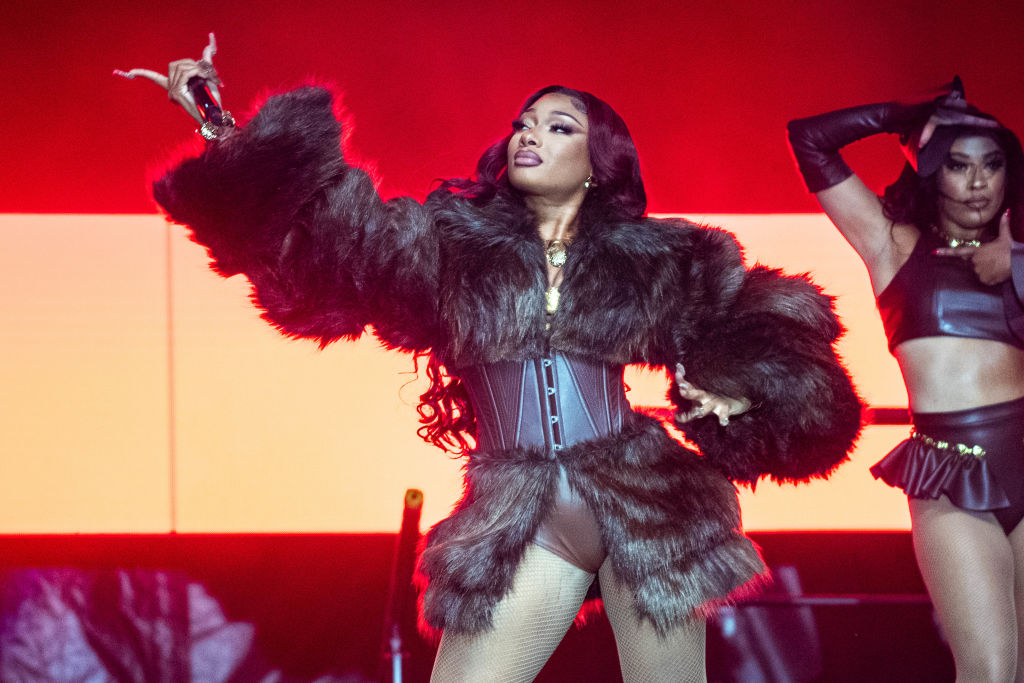
Aaron J. Thornton/FilmMagic
Megan Thee Stallion — Tina Snow
Megan Thee Stallion opened her 2018 debut album Tina Snow by saying, “First of all, I’m from Houston,” and what she was saying was, “What high school did you go to? And what’s your mama’s last name?” The distinctly Southern quality, making it clear who you belong to and where you are from, is critical to this album and Megan Thee Stallion’s work as a whole. Without understanding how Houston breathes, rides and eases into every sound, you might get lost trying to understand Megan Pete.
The story of Tina Snow begins with the 2017 freestyle that put the industry on notice of Megan Thee Stallion’s athletic artistry. She had just transferred to Texas Southern University as a rising junior when she filmed the “Stalli Freestyle.” Her bars took ears by storm with their directness (“Your favorite rapper only use onomatopoeias”).
On Tina Snow, Megan Thee Stallion introduces us to her world’s various personas. We meet Tina Snow, stylized after the late Pimp C, Megan Thee Stallion, the artist, at her most confident and, lastly, Hot Girl Meg, the life of the party who is about her business and pouring you a shot all at once.
We get Tina Snow with more than a pinky ring of bravado on tracks such as “WTF I Want,” “Neva,” and “Tina Montana.” We are met with the bubbly bars of Hot Girl Meg on “Hot Girl,” “Freak Nasty,” and “Big Ole Freak,” party anthems of sexual dominance where Megan Thee Stallion teaches her lovers the rules of her pleasure. We return to Megan The Stallion on “Good At,” “Cognac Queen,” and “Cocky AF.”
Acknowledging the work of Houston legends Lil Keke and Scarface, Megan Thee Stallion hits all the necessary boxes for a powerful debut project with club anthems, slow jam sex playlist classics and guttural “f— you n—as” music that soundtrack the lives of her fans in whatever way they see fit. — Clarissa Brooks
2019

Erika Goldring/Getty Images
Every artist aspires to have that project that makes even the staunchest of critics eat humble pie. For NBA YoungBoy, as divisive and polarizing a rapper as we’ve seen in the 21st century, this is unquestionably his. On AI YoungBoy 2, standouts are a surplus (“I Don’t Know,” “Carter Son,” “Self Control”). There’s a Tupac Shakur-like sense of urgency here — almost as if NBA YoungBoy can see something the rest of us can’t. His lifelong trauma and paranoia produce one of the most uncomfortable yet endearing audio voyages of the last decade.
“The way I came in the game, the image that I had put out, they wouldn’t expect me to have feelings,” NBA Youngboy said on “Lonely Child.” “Know it probably don’t seem like it / That’s why they talk about me like I ain’t human, but we all is.”
NBA YoungBoy admitted struggling with how his graphic street narratives have influenced a generation. But on AI YoungBoy 2, it all comes together in the most neatly wrapped form of pure audio chaos. Looking to party? Find another project. Looking for gutting vulnerability mixed with loneliness and rage from a beloved antihero? Make sure you prepare yourself for what you’re about to hear. — Justin Tinsley
2020

Prince Williams/Wireimage
2020 stank to high heaven for several reasons. Lil Baby bottled that emotion and gave it a voice on “The Bigger Picture,” which felt like a left turn for the Atlanta native not known for social commentary. Better than anyone at the time, he expressed sadness, anger, and frustration over Black men and women getting killed by cops, along with the crumbling state of race relations. “The Bigger Picture” spoke to this current generation the same way “Fight the Power” and “Alright” spoke to earlier times. But while Chuck D seemingly provided solutions and Kendrick Lamar made a declarative statement, Lil Baby wasn’t sure what to do. Most of us probably related to that helplessness. Rappers rarely show their vulnerability. Supreme confidence is necessary for the genre. Lil Baby said “nah” to all that posturing and did the thing hip-hop always prioritized: Keeping it real.
The song, along with the album as a whole, exemplifies what happens when rappers get the freedom to be human. My Turn showcased a more mature artist because he embraced the man behind the rap name.
Romance, anger, violence, sadness, heartbreak, and all of life’s contradictions get their time here. But it never felt dull or overwrought, he kept everything light and fun. That’s a high-wire act that takes a lot of skill. Lil Baby enlisted Future, Lil Wayne, Young Thug, 42 Dugg, and even a young Rylo Rodriguez to help along the way, and they never upstaged him. No one enlists all those feature artists just to have fun. Lil Baby made it clear he feared no one on that microphone. It’s possible he asked for featured artists to show how much his skills had grown between albums. Lil Baby said the album’s title comes from him feeling like everyone else had their turn. To paraphrase a famous wrestler, their time was up.
So, we got features, artistic growth, and a song that became the song. Oh, and top-tier rapping. The other thing that earns My Turn a spot on this list is that the album established a new school. 42 Dugg, Rylo Rodriguez, and Gunna got their biggest stage to date, creating a hunger for more. Yeah, the moment belonged to Lil Baby, but others ran with the moment and three years later, it’s now their turn. — Marcus Shorter
Freddie Gibbs didn’t see a Grammy invitation in his future, much less a nomination. Alfredo proved him wrong. The album provided calm in a year marked by turmoil and carved Gibbs’ name in every top rapper list on this or any other planet. Alfredo also stands as one more reason on an incredibly long list for producer Alchemist’s hall of fame candidacy. He meshes with almost everyone, but this album taps into something more sinister and cinematic. From the album title to the cover art, Gibbs and Alchemist created their mob tale that met the moment. Gibbs’ brand of braggadocio and introspection felt appropriate for an artist entering the next stage of his career and staking his claim as one of rap’s current greats. — Marcus Shorter
2021
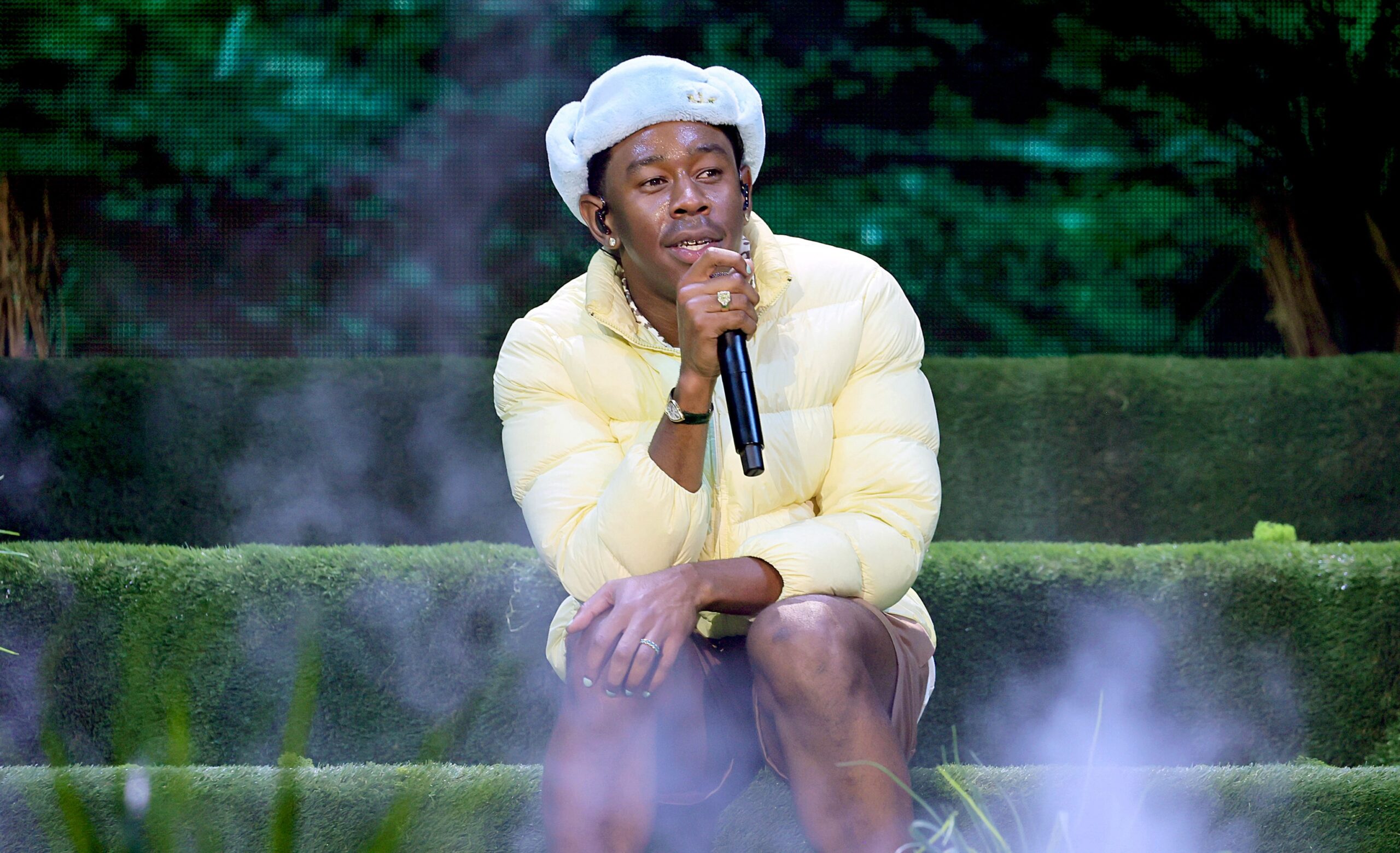
Theo Wargo/Getty Images for Roc Nation
Tyler, the Creator — Call Me If You Get Lost
Call Me If You Get Lost reminded anyone who forgot that despite his other artistic inclinations, Tyler, the Creator’s rap skills remain second to none. Maybe that’s why this album needed the narration of DJ Drama, whose brand starts and stops with rappers attacking beats and showing off. They talk their talk, and DJ Drama echoes everything they brag about. And Tyler, the Creator brags a lot on this album over production styles baked into hip-hop’s history. But everything is effortless. During an era where the rapping part of the culture sometimes takes a back seat to theatrics, Tyler, the Creator stripped all that away and took it back to the essence: One MC and a DJ telling everyone that there is no competition. — Marcus Shorter
“Old Town Road,” the debut single from Lil Nas X, became the first song in the 21st century to be certified diamond while holding the number one spot on Billboard. Lil Nas X followed it with Montero, dropping a cavalcade of hits that made him part of the proverbial water cooler conversation every time. Lil Nas X also kicked open doors for queer representation in hip-hop that has been, at best, resistant to queer artists and, at worst, a bastion of anti-gay bias. But no one could deny Lil Nas X. You’d be a fool to try. — David Dennis
2022

Matt Winkelmeyer/Getty Images for Coachella
Vince Staples — Ramona Park Broke My Heart
With 2021’s Vince Staples and Ramona Park Broke My Heart in 2021, I wouldn’t fight much if someone argued that Vince Staples has the best body of work in the 2020s. Staples is a hip-hop renaissance man, a natural at whatever he embarks on — acting, thought-provoking interviews, commercials.
Ramona Park is an ode to his hometown: the good, the bad, the tragic and everything in between. Catchy records like “Magic” exist here, but what works so well is that the entire album reads like an ode to the concrete he thankfully survived. — Justin Tinsley
2023
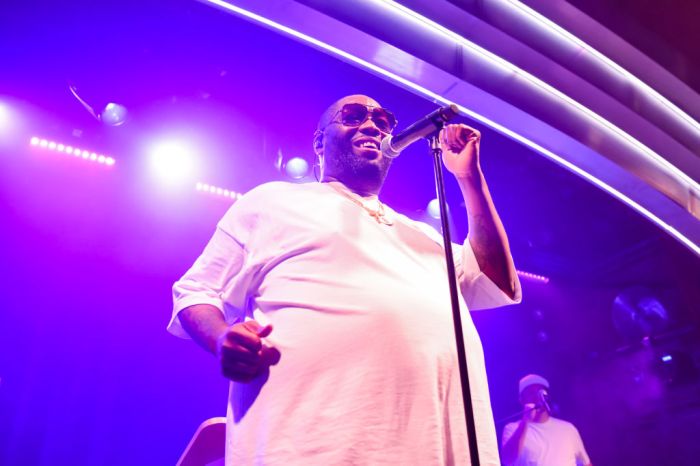
Robin Little/Redferns
Killer Mike — Michael
Killer Mike is one of the most polarizing figures in hip-hop. And he probably wouldn’t have it any other way. Mention his name, and you’ll either get eye rolls from people who rebuke his stance on the National Rifle Association and opinions on local politics, or you’ll get praise from people who believe he is speaking directly to them with his ideas on liberation. And there’s hardly ever an in-between.
While Michael tosses a lot of political javelins into the fray, the album is a unifier in that no matter who you voted for, you can identify with the central tenets of this electrifying body of work, namely, the grief Killer Mike experienced after losing his mother. “Shed Tears” and “Motherless” will close anyone with a pulse to tears as he grapples with the deep sadness of loss. But like any great preacher, Killer Mike won’t leave you in your sorrow. “Something for Junkies” is an ode to the forgotten, and “Talk’n That S—!” is an uplifting sermon from a proud Black boy from the South. Killer Mike dropped a gem with this project, whether you like what he says or not. — David Dennis
This post was originally published on this site be sure to check out more of their content.



